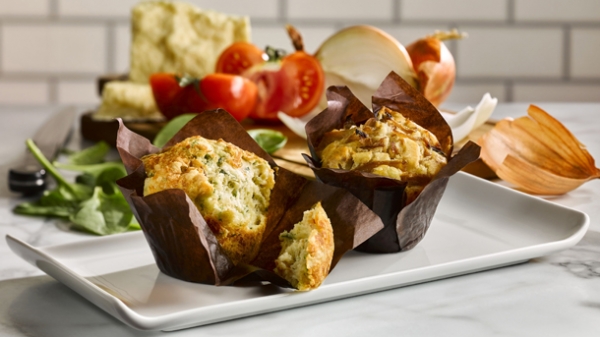The Big Interview
Bidfood sets sights on growing pub customers

Despite the optimism, though, there are inevitable troubles ahead the business will likely have to face.
Over canapés at the foodservice heavyweight’s Slough headquarters, it is tough to think of any negatives as the two bosses outline their plans to ensure the company’s growth and what marketplace trends will help them to do this.
But first, the question: why all the name changes over the years? This is the third time the foodservice firm has changed its name since South African parent company Bidvest bought the business from Booker in 1999.
Straight after the Booker buyout, it was renamed Bidvest 3663 and then became Bidvest Foodservice, while the decision to rename to Bidfood was recently made. Selley says: “I can put my hand on my heart and say that is it now. We changed it to Bidfood because it incorporates our heritage and what we do.”
The name changes form part of a long process to distance the business from Booker, while maintaining its links with Bidvest and also showcasing to current and potential customers its dedication to food. The pair believes Bidfood – a name that will officially come into force from April – does that.
But what’s in a name is not necessarily the most important topic at the moment. For many foodservice suppliers and their customers, the current political landscape is causing problems. Many suppliers are raising prices in response to the Brexit vote and the resulting weakening of the pound.
Worries about price hikes
Price hikes are rightly a cause for concern, but Selley has doubts the majority of cost increases truly reflect what is happening in the market. Bidfood sources 62% of its products from Britain, Selley claims, adding that this puts the company in a more stable position when it comes to pricing.
“We already have a high percentage of our products that are UK-sourced and about 56% of our products are from UK SMEs (small to medium-sized enterprises), so we are not beholden to the big multinational companies,” he explains.
“In terms of pricing [because of Brexit], too many people are being opportunistic and too many are trying to put blanket pricing out there, whether that be suppliers or wholesalers.”
It has always been the practice of Bidfood’s buyers to scrutinise suppliers’ costs, so when one tries to push price rises, questions are asked about the raw materials, where they come from, currency fluctuations, where the products are assembled and even packaging costs.
If price rises are unavoidable, they will then have to be passed down to Bidfood’s customers, he concedes. But, when this happens, he adds: “We will then have the conversation with our customers about what is best for them, things like branded versus own-brand. We try to work with our customers to mitigate the impact of price rises.” That said, the first line of defence is always to only accept price rises that are “absolutely justified”.
While Selley believes there are opportunistic suppliers out there taking advantage of Brexit and the weakened pound, he is not ignorant to the fact things are changing. “There is no doubt around the fact there is inflation out there, but I think if people are taking a chance then they deserve to be caught out.”
Because of Bidfood’s focus on UK products, Kemp confidently predicts its sourcing won’t change dramatically, if at all, once the UK leaves the European Union (EU). One of his worries, however, is around sustainability of supply following the nation’s divorce from the EU.
“I don’t think our sourcing will change a great deal,” he explains. “But, the thing that will change from a distributor’s point of view is the challenge of the sustainability of their products. We’re already seeing some 6,000 suppliers within the UK that are in trouble and if they start to disappear then major operators like ourselves will need to look at maintaining a sustainable supply chain.”
Concern over US imports
Another area Kemp is concerned about is what a potential trade deal with the US could do to the landscape of UK food and drink without the protection of the EU food safety laws, which ban all sorts of “nasties” from entering the country.
“The opportunity for bringing in more food from the US is something I don’t think we should lose sight of because it is fraught with potential legal issues that we haven’t known,” says Kemp.
Such issues include the additives allowed in US food and drink, along with the hefty amount of growth hormones alledgedly used in meat production, as well as things like processed meat products made from ‘pink slime’ – a process where high-pressure water is used to draw meat and sinew from carcasses to form products.
There are a lot of ‘ifs’ when it comes to the future, Brexit and a US trade deal, but Kemp has got his eye on it more than most, commissioning research from the University of West London into topics such as how the use of antibiotics and additives in food can affect health.
“We’re doing this because, today, we sit in a confused marketplace – is slime good or bad for you? I don’t think the general consumer is aware of issues like this, which is why we’ve already commissioned three or four studies.”
Trend towards buying British
Despite possible sourcing problems, Selley remains an optimist, pointing out there is already a big consumer trend towards buying British. “Even before the Brexit vote there was already a trend towards buying more British food and sourcing locally,” he points out.
“The economics [of Brexit and the weak pound] will force that to accelerate, so you know British food will become better value. Whether you will have an increased sense of patriotism from Brexit, who knows? It is not clear whether that will further encourage people to buy more British food or send them in the other direction.”
One thing that is certain is Bidfood’s commitment to working with more pubs. The company currently only works with 1,300 pubs, a drop in the ocean compared with some of its competitors. But, the on-trade is a prime target that will gain more of the business’s focus.
For Kemp, pub food is now better than it has ever been, and he feels it appeals more especially to the younger generation, who don’t want to eat in “stuffy restaurants” and instead prefer a more casual environment where they can take their time and enjoy things they like.
“Pubs are one of our main focuses, particularly in the independent segment,” he confirms. “What you have in the pubs and bars market is the emergence of the major brands like JDW (JD Wetherspoon) and Greene King, which are sitting in a different space to independents and using distribution organisations to deliver a self-selected range.”
Such companies stick with the familiar pub concept, he claims. But independent operators are diverging into areas where there is potential for dramatic growth, Kemp adds.
“Future pub trends are about upscaling and offering a better deal away from the 15-minute service. I think the problem pubs had [in the past] is if you walked in and sat down, you expected to have food within a few minutes.”
Upscaling opportunities
Now, though, he feels there are many sites, especially gastropubs, offering more of an experience, though operators don’t have to be at a ‘gastropub level’ to get in on the action. Bidfood offers formats to upscale and downscale dishes to help operators achieve better margins.
For example, with a standard burger, pubs can achieve a margin of around 20%, but upscaling it to something more premium can help them win around a 150% margin, Kemp claims.
“Where the pub market has been, in the past, was too safe; it was things like a curry night on a Thursday. ‘Brit traditional’ [dishes] will stay on the pub menu, for sure, but it will be freshly produced and new flavours like Korean will start to come in,” he predicts.
For those fearing foodservice suppliers can’t produce a premium offer, Kemp maintains: “Our business supplies high-end customers and our top customer is Her Majesty the Queen and there is no one more discerning than the Queen.”
As with most suppliers to the pub trade, Bidfood has a touch of premium-fever, with Kemp predicting it is the route many businesses should follow to make more money. He adds: “In most cases, the market is trading up and those that are doing so are creating more profit.”
That said, it is not a format everyone can follow. Instead, he explains, operators should do a better job of targeting their audience’s needs. He uses the launch of the National Lottery in the mid-90s as an example of how to do this, saying areas in the UK with a dense population of low to mid-income consumers were no more than 400 metres away from a lottery ticket machine, while those better off were around two miles away.
“If you relate that back to food as a marketer, then you know the maximum spend potential in some areas might be two meals for £15 and in the likes of Mayfair it might be above £30 a head.”
Although there may be troubles ahead, Bidfood’s leaders appear prepared to tackle them. Brexit and the potential for increased imports of US food and drink do not faze the likes of Selley and Kemp, who seem well positioned to counter any threats under the company’s new name.








